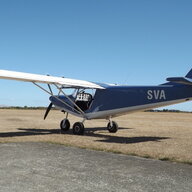OME, in this instance, it aint crap:
The subsidised rollout of ADS-B in NZ has been under way for 2 years now. And while the #1 eyeball needs to remain our first defence against midairs, a common experience has been this: our ADS-B is showing us aircraft out there that we haven't seen. And furthermore, even armed with the ADSB-B data on location, height and direction, it can still be helluva hard to see 'em.
I was initially reluctant to install the gear, but my view now is that we need all the tools at our disposal.
Not convinced? Consider this from a study by Andrews, J.W., Unalerted Air-to-Air Visual Acquisition. 1991, Lincoln Laboratory,
Massachusetts Institute of Technology: Lexington, MA. p. 1-21.
"In a striking illustration of this point, Andrews performed a study in which unexpected
airborne intercepts were deliberately arranged during cross-country flights by 24 general
aviation pilots. Pilots were accompanied by a second (safety) pilot, and were asked to call
out all sighted traffic as soon as they saw it. Pilots were informed that the aim of the study
was to “add to our knowledge concerning how VFR pilots actually fly”, and to “determine
how you allocate your work-load resources”. A total of 64 intercept encounters
were arranged. Twenty eight of these intercepts were not seen, representing a miss-rate of
43.8%. Because pilots were aware that their performance was being monitored, it is
reasonable to assume they were making an active effort to maintain an active and vigilant
look-out. Despite these efforts, pilots failed to see another approaching aircraft on more
than 40% of occasions."







